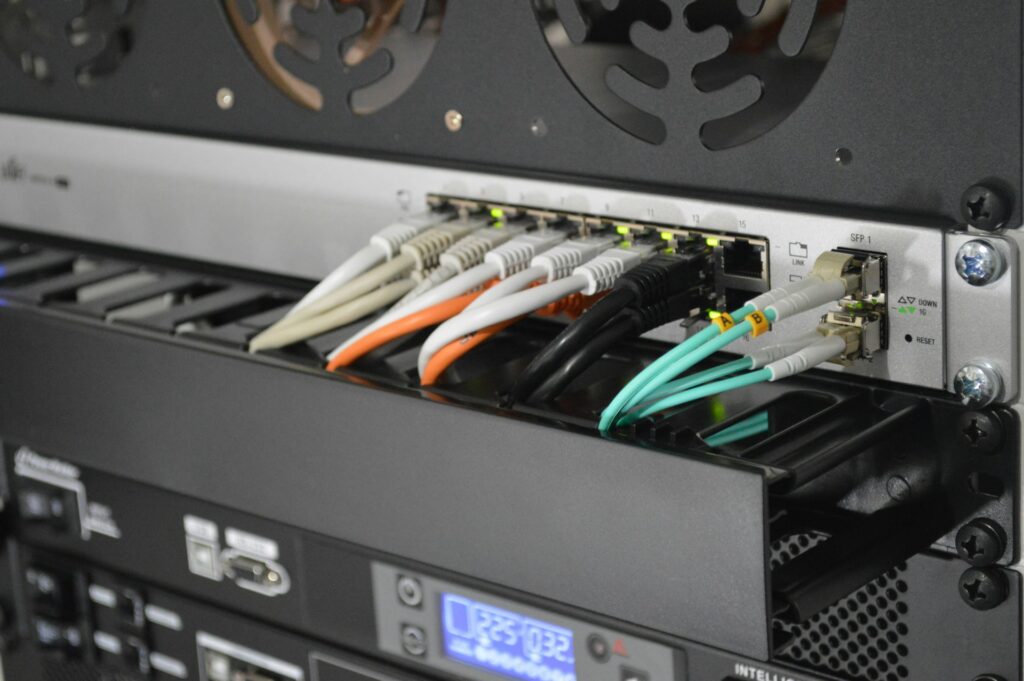
Introduction to Ethernet Switch Networks
In today’s world, the ability to connect multiple devices reliably and efficiently can mean the difference between seamless productivity and frustrating bottlenecks. That’s where Ethernet switches networks come in – they provide a robust platform for data exchange among computers, servers, and countless other devices. At the heart of these networks, Ethernet switches act as intelligent network traffic managers, directing data flow to the correct destinations with minimal latency. Our detailed guide is a beacon to navigate the intricacies of setting up, configuring, and maintaining an optimized Ethernet switch network.
Whether for small home offices or vast corporate environments, understanding how to harness the power of Ethernet switches is crucial. By selecting the right equipment, adhering to industry best practices, and safeguarding your network with appropriate security measures, you will establish a network that is not only high-performing but also resilient in the face of growing demands and potential cyber threats.
Initial Considerations for Ethernet Switch Setup
Initial considerations are the blueprint for your network’s future efficiency and scalability. Before purchasing equipment, assess the scale of your network – how many and what types of devices will connect? What are the bandwidth requirements of these devices, and what is the projected growth of your network over the next several years? Consider the types of applications your network will support, from video conferencing to large data transfers, and the impact these will have on latency and throughput. It’s prudent to design with capacity for expansion to avoid costly overhauls down the line.
A practical understanding of the physical layout of your establishment is equally important. This involves calculating the length and types of cables required, determining the best locations for switch installation based on accessibility and signal coverage, and ensuring environmental factors such as temperature and humidity are within operational tolerances for the hardware. Network topology, whether star, ring, or mesh, should also be deliberated upon to suit your organization’s specific data traffic patterns and continuity requirements.
Choosing the Right Ethernet Switches
Choosing the right switches is a foundational step in network setup. With their advanced feature sets, managed switches are suitable for complex networks requiring meticulous traffic management and security controls. These switches allow you to prioritize traffic, create virtual network segments, and monitor network health in real time. On the other hand, unmanaged switches are a fit for smaller or less complex environments as they require minimal configuration and maintenance. Furthermore, the scalability of your switch should be considered – does the switch offer enough ports for future devices, and does it support link aggregation for higher throughput needs?
Other aspects, such as compliance with network standards, support for Quality of Service (QoS), and Power over Ethernet (PoE) capabilities, might sway your decision depending on the needs of your network. PoE is particularly noteworthy as it simplifies cabling and infrastructure by delivering power and network connectivity over a single Ethernet cable to devices like VoIP phones and wireless access points. With the advance of smart technology and IoT, the demand for switches with PoE capabilities is rising, further highlighting their relevance in contemporary networks.
Physical Setup of Your Ethernet Switch
The physical setup of an Ethernet switch may appear straightforward, yet it holds significant implications for network performance and longevity. Careful consideration of the switch location is essential – it should be accessible for maintenance yet secure from unauthorized access. Proper ventilation or cooling systems should be in place to prevent overheating, which can lead to hardware failure and network downtime. It’s also advisable to ensure that the switch has a stable power source and, if possible, a backup in case of outages.
Cable management deserves meticulous attention. Not only does proper cable organization present a professional appearance, but it also prevents cable damage and simplifies troubleshooting. Labeling cables and ports can save considerable time during network updates or resolving connectivity issues. Furthermore, implementing structured cabling standards can make a meaningful difference in network reliability and ease of management.
Configuring Your Ethernet Switch
Configuration is the stage where your network begins to take shape according to the unique requirements of your setup. Managed switches offer a user interface – typically web-based – that allows you to customize settings. This can include creating VLANs to separate different types of network traffic for increased security and efficiency, setting up the quality of service to ensure bandwidth is prioritized for critical applications, and enabling port mirroring for monitoring purposes.
An often-overlooked aspect of configuring switches is applying the latest firmware updates the manufacturer provides. These updates not only introduce new features but also address security vulnerabilities and bugs, reinforcing the security and stability of your network. Initial configurations should also include setting up administrative accounts with strong passwords and documenting configurations precisely for future reference or in the unfortunate event of a device reset.
Security Measures for Ethernet Switch Networks
As the foundation of your digital fortress, network security cannot be overstated. Enabling features like 802.1X for network access control, activating port security to limit the number of MAC addresses per port, and segregating sensitive data through VLANs are sizable steps toward a secure network. Encrypting data as it traverses the switch network is an additional defense against eavesdropping and data breaches.
Continuous education on best practices and the latest threats is indispensable to stay ahead in the ever-evolving landscape of cybersecurity threats. Having a security response plan is also crucial, including immediate steps to isolate compromised parts of the network and protocols to restore services after an incident. A proactive approach, including regular network security audits, can help identify and mitigate vulnerabilities before they are exploited.
Troubleshooting Common Ethernet Switch Issues
Even with the meticulous setup, network issues are inevitable. When troubleshooting, a systematic and logical approach is your best ally. Start with the basics – ensure all cables are seated correctly and inspect for physical damage. Check the LEDs on the switch for immediate diagnostics. Simple measures like power cycling the switch can sometimes resolve unexpected behavior.
More complex issues may require delving into configuration settings or consulting logs for errors. Knowing how to interpret these logs can provide insight into hardware faults and unauthorized access attempts. Keeping a log of all network changes can also aid in identifying if recent adjustments may have caused current issues. Additionally, ensure that you have a backup configuration on hand to restore service, if necessary, quickly.
Maintaining Your Ethernet Switch Network
A regular maintenance routine is essential to ensure your network’s fluid operation. This includes monitoring network traffic for anomalies that could indicate issues or breaches, applying software and firmware updates as they become available, and conducting periodic hardware inspections to detect and preempt failures. For mission-critical environments, it may be prudent to maintain spare switches and parts for quick replacement. Network documentation should be kept current, as it’s invaluable during routine and emergency operations.
One aspect of network maintenance often overlooked is the need to keep pace with growth and technological evolution. As new devices and applications are introduced, periodic reviews of your network’s performance and capacity become essential. This oversight ensures that your infrastructure meets the demand without compromising service quality or security.
Expanding Your Ethernet Switch Network
Network expansion is a testament to your organization’s growth but comes with its own set of challenges. Adding more switches and potentially reconfiguring your network topology requires careful planning to avoid service disruptions. The structured hierarchy of switches – from core to distribution to access layers – might need reassessment, and introducing new switches offers an opportunity to upgrade to the latest standards, providing higher speeds and better features.
It’s also important to consider the physical aspects of expansion, such as space for additional hardware, considerations for increased electricity demand, and the cabling infrastructure required to interconnect new switches seamlessly into the existing network. Evaluating the total cost of ownership, including maintenance and energy costs, should also influence decisions around network expansion. With thorough planning and consideration for future needs, expanding your Ethernet switch network becomes a smooth transition rather than a disruptive overhaul.


